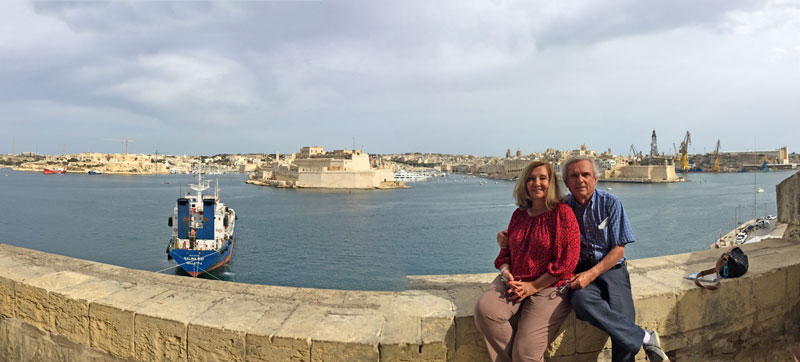
A long walk around Valetta to take in the main sights. The Grand Harbour is spectacular. Now off to London for the Antigua Curry Club London!
What a trip! Click on the photo to see a larger image.

This morning, round the corner from our apartment, a wedding at a local church, ready with the red carpet, leading down to the Grand Harbour. We went to the wedding (for a while).
Click on the photo to see a larger image.
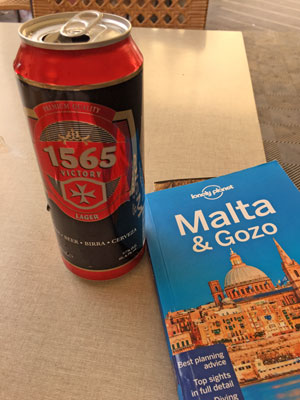
My Jenny often takes photos like this. Today, I could not resist. The past few days, we have studied the 1565 Ottoman siege of Malta. What I did not know is that they have a beer to celebrate the victory ! Click on the photo to see a larger image.
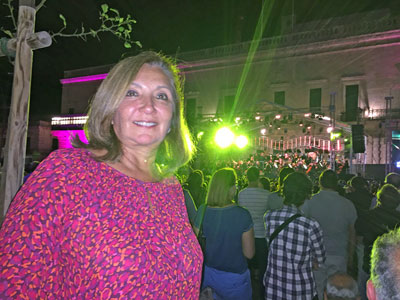
In front of the Grandmasters' Palace, there was a concert by Malta Philharmonic and we got a table in the restaurant next to it. Here's a short video of one of the pieces I shot last night on my phone. A stunning setting for a concert. Click on the photo to see a larger image.
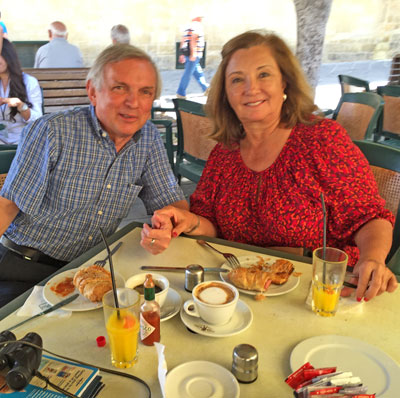
For breakfast this morning, Maltese "pastizzi" at Cafe Cordina, an old Valetta institution.
Click on the photo to see a larger image.
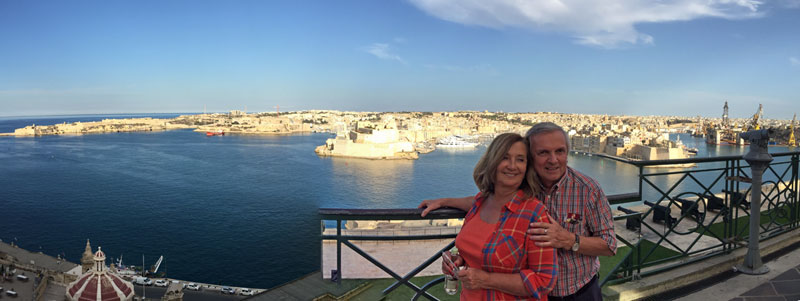
The Grand harbour of Malta is breathtaking. A couple of days ago we were on the other side, in Vittoriosa, see photos below. That's the town to our left in this photo, with Fort San Angelo and sailing boats on its side. Click on the photo to see a larger image.
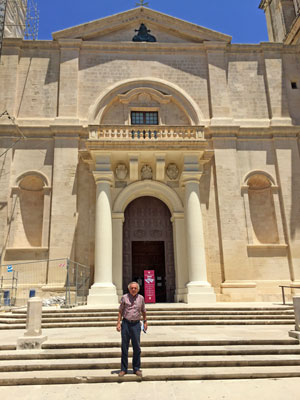
St.John's Co-Cathedral in Valetta.
Click on the photo to see a larger image.

Valetta has a fleet of electric taxis. Each has a name, such as Fiona, Rebecca and so on.
Click on the photo to see a larger image.
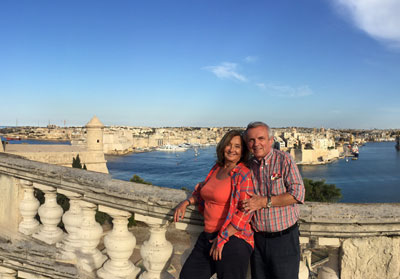
The last two days of our trip to Malta are in Valetta. Here we are above the Grand Harbour. Click to see a larger image.

St.John's Co-Cathedral in Valetta, the church of the Order of St.John, the Maltese Knights.
Click on the photo to see a larger image.
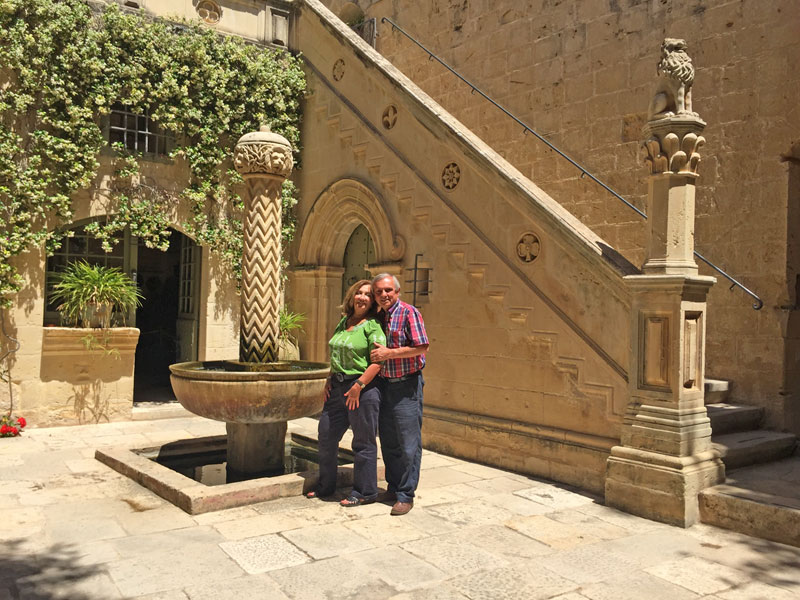
Mdina, Malta's old capital on a hilltop, has many palaces of the old Maltese aristocracy, most still in private hands. One, a 13th century Norman palace, now called Palazzo Falso, was purchased almost 100 years ago by a Swedish philantropist, who restored it. He made sure that it became a museum.
Click to see a larger image.
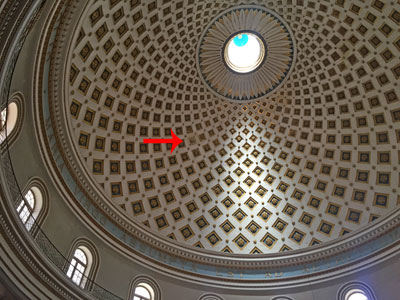
Mosta is near Mdina and has one of the world's largest domes, modelled on the Pantheon in Rome. During the 1942 air raids on Malta, a bomb fell through the dome (see where the damage has been repaired) while some 300 people were in for Mass. It did not explode! Click to see a larger image.
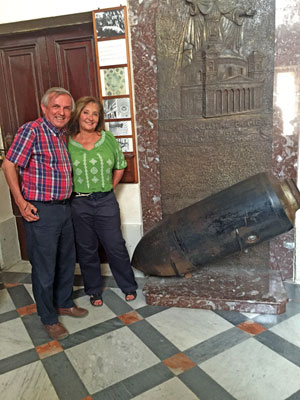
Here is the replica of the bomb that fell into the church.
Click on the photo to see a larger image.

Back in Mdina, Malta's old hilltop capital.
Click to see a larger image.
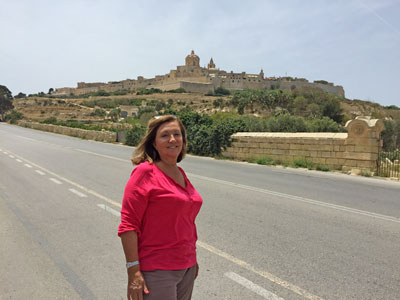
Mdina sits on a hilltop, surrounded by fields. Many of them have been converted into vineyards. Click on the photo to see a larger image.

Malta's Grand Harbour. This marina, between Senglea and Vittoriosa (also called Birgu) saw action in the Turkish siege of Malta in 1565 and devastation during the 1941-43 Italian/German bombing with 2,000 air raids. Now it is at peace and we came shopping for a boat. This photo was taken by a couple with young children, South Africans, who also lived in Australia and now are moving to Gozo. Last weekend, we met an Australian Maltese who just moved back here to live. Malta is receiving reverse migration. It is a wonderful place. Click to see a larger image.

Roaming around tiny streets in Vittoriosa, used to be called Birgu. But after the Knights of Malta repelled the Turkish siege in 1565, the name was changed. Some people still use Birgu.
Click to see a larger image.

Vittoriosa streets and alleyways used to be the home of the Knights of Malta, before they won over the Turks in 1565 and built a new capital, Valetta.
Click on the photo to see a larger image.

The island of Gozo: The Azure Window in Dwejra. You see there are people on top of it. The window collapsed in 2017 during a storm, less than a year after our visit!! Click on the photo to see a larger image.
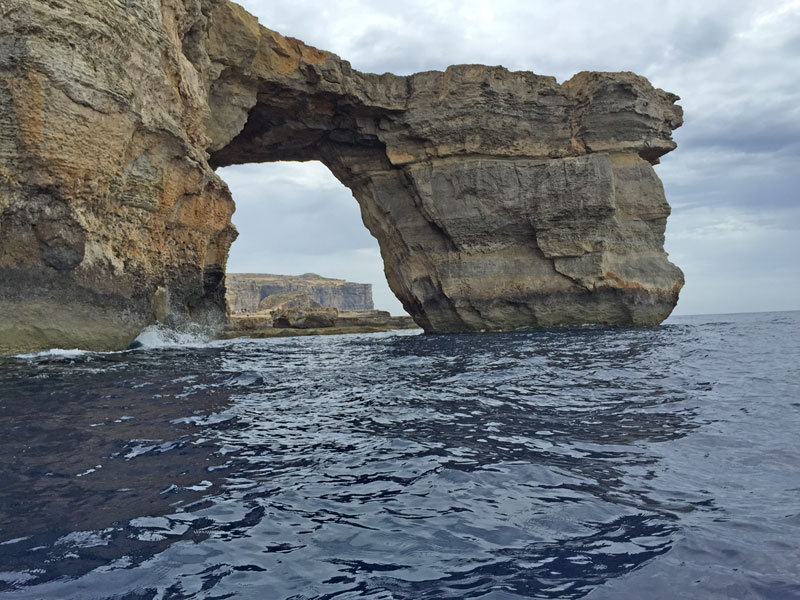
Gozo: The Azure Window in Dwejra from our boat. The boat went through it. Now, it no longer exists. Sea waves, over thousands of years, weakened the rock that fell down, creating a window, which fell down in 2017. Click on the photo to see a larger image.
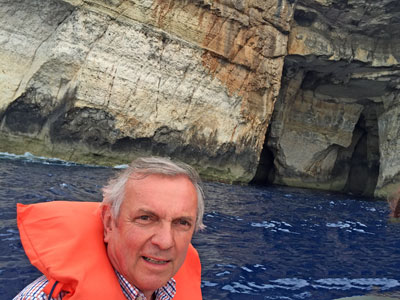
A boat ride through the tunnel between Gozo's Inland Sea and the actual sea.
Click to see a larger image.
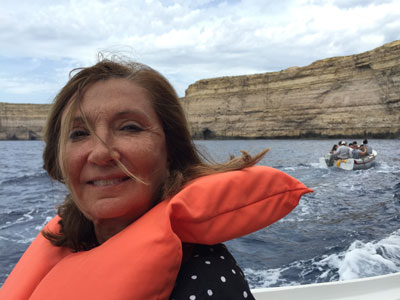
Inland Sea fishermen no longer have to fish. They make more money taking tourists on boat trips. Click on the photo to see a larger image.
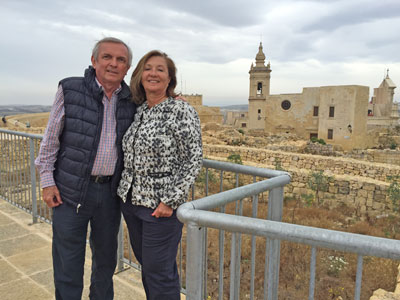
Gozo's capital, the small town of Victoria, is dominated by the Citadella, an old hilltop fortress. This is seeing a major reconstruction with European Union funds.
Click to see a larger image.
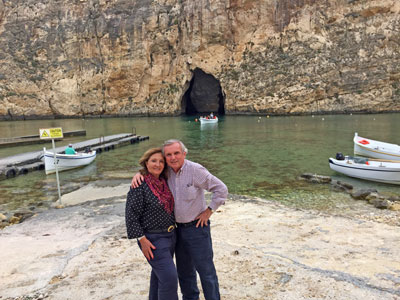
In Dwejra, on Gozo's western end, is the Inland Sea, a fishing port connected to the sea by a tunnel in the rocks. Over 40 years ago, I swam through the tunnel. Today, we took a boat. Please click on the photo to see a larger image.
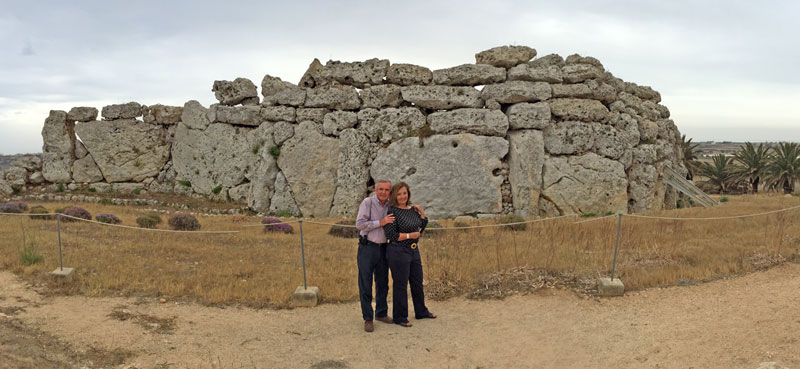
Ggantijia temple on Gozo, built around 3,600 B.C, is much older than Stonehenge. The temple was documented by travellers in the 17th and 18th centuries. Their drawings helped archaeologists reconstruct it after damage in the 19th and 20th centuries. Please click on the photo to see a larger image.
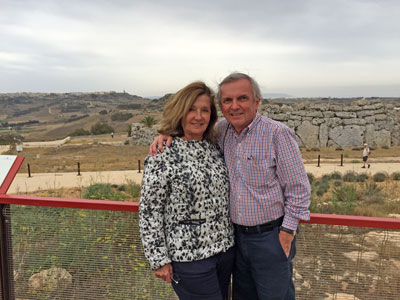
Ggantijia temple, built around 3,600 B.C, is much older than Stonehenge.
Click to see a larger image.
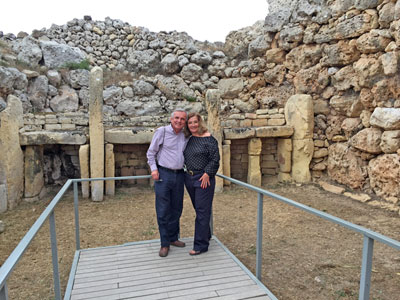
Inside the Ggantijia temple in the island of Gozo.
Please click on the photo to see a larger image.

Malta-Gozo ferry passing Comino, with an ancient lookout tower on top.
Click to see a larger image.
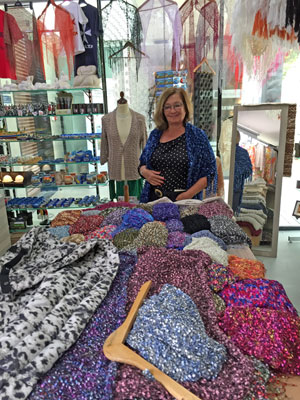
Gozo: buying original Gozitan shawls. Please click on the photo to see a larger image.
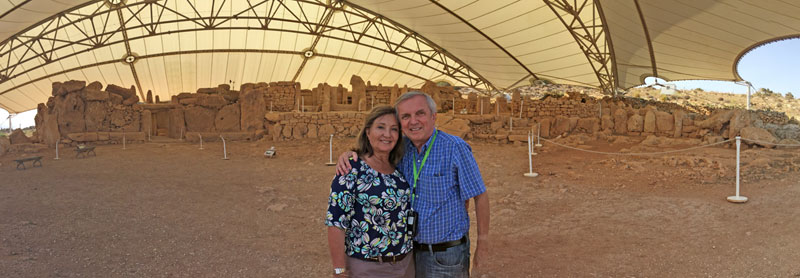
Mnajdra temple, here in Malta, along with the next door Hagar Qim, built between around 3,600 - 3,200 B.C., some 500 years earlier than Stonehenge. The oldest freestanding man-made stuctures in the world. Please click on the photo to see a larger image.
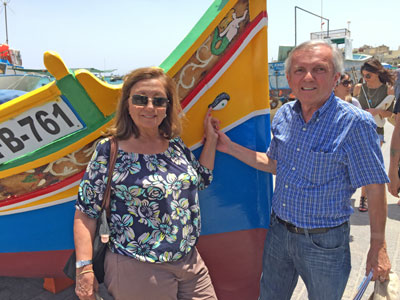
Maltese "luzzu" boat, with an eye for the fisherman's protection. Click to see a larger image.
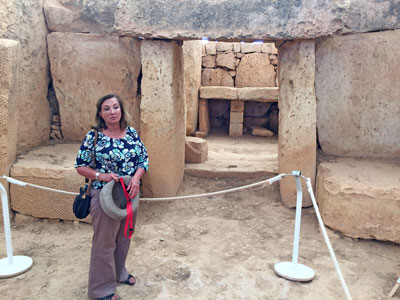
Mnajdra temple, from between 3,600 - 3,000 B.C.
Please click on the photo to see a larger image.
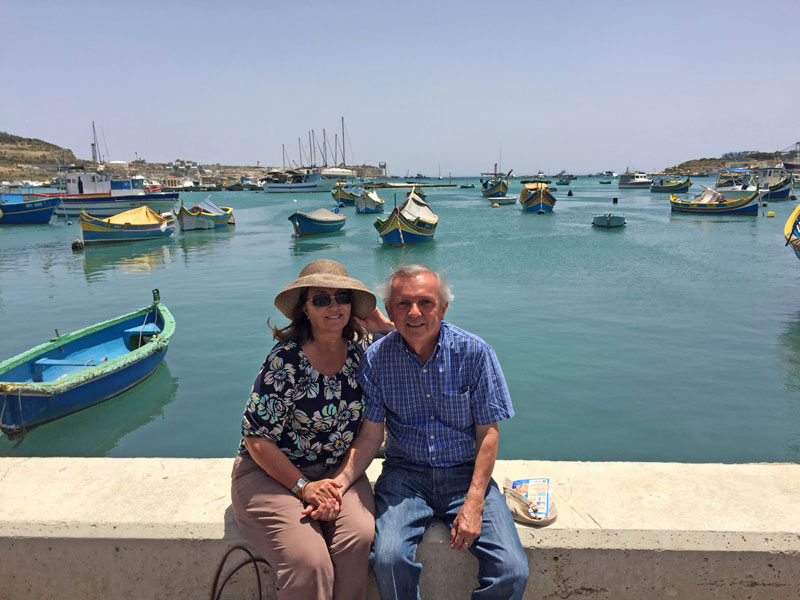
We had lunch in the colourful Marsaxlokk harbour, the home of 70% of Malta's fishing fleet. Click to see a larger image.
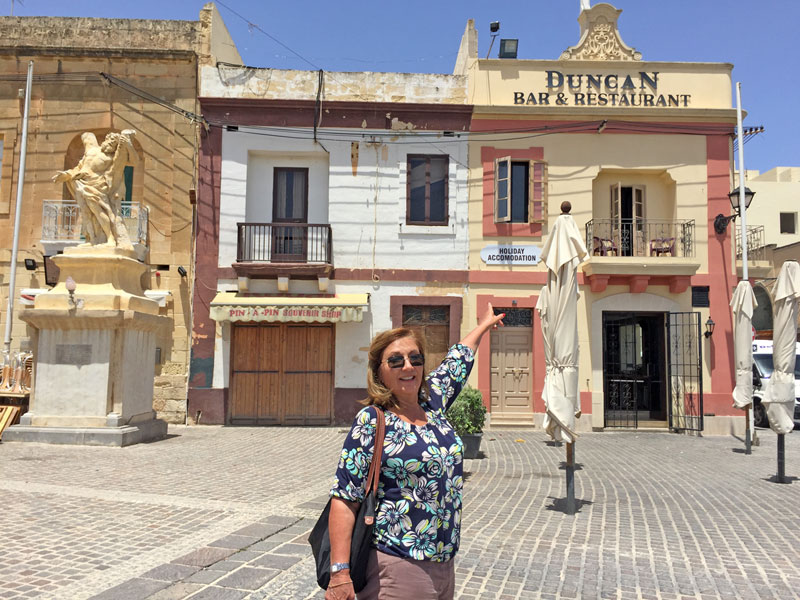
Lorraine's old family business by the seaside in Marsaxlokk, the southern fishing harbour of Malta. Click to see a larger image.
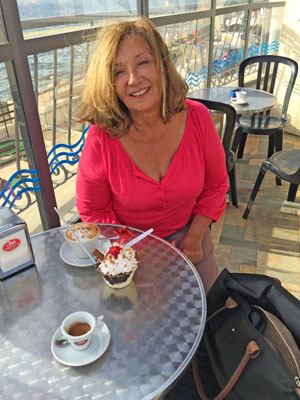
Back in our seaside towns of Qawra and Buggiba. After a bit of history, now some gelato and coffee. Click to see a larger image.
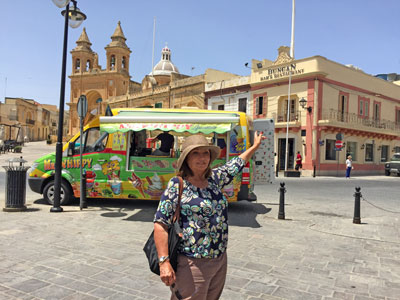
In Marsaxlokk, by the harbour, Lorraine found Triq Duncan (Duncan Street), as well as the old family business. Please click on the photo to see a larger image.
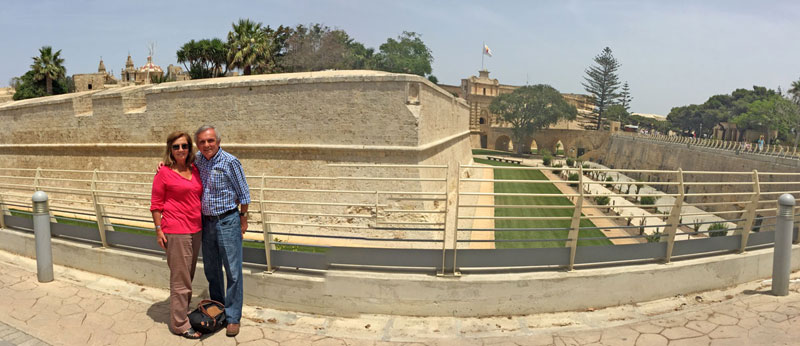
The walls of Mdina and the old moat ("Rabat"). Last year, 2015, they installed a lovely new park in the old moat, now much used to events such as weddings.
Click to see a larger image.
The old Norman cathedral was destroyed by an earthquake in 1693 and this one built soon after. Click to see a larger image.
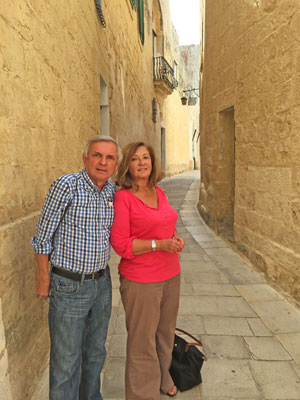
The Arabs changed the street into a narrow warren of crooked streets ... difficult to fire an arrow any distance and it slows attacking horsemen down. Click to see a larger image.
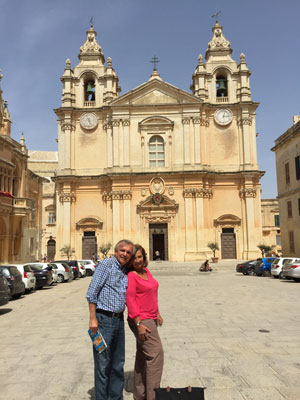
The old Norman cathedral was destroyed by an earthquake in 1693 and this one built soon after. Click to see a larger image.

Heading up the hill to the ancient capital of Mdina, which was Phoneician, Roman, Arab (the name "Mdina" means a "walled town"), Norman, Knights of Malta, Napoleon, British, now a fabulous old city. Click to see a larger image.
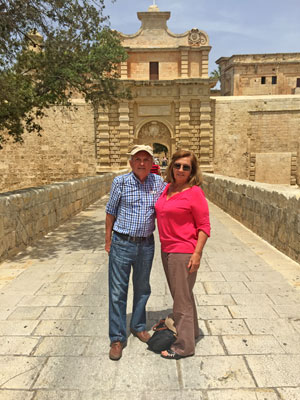
The entrance to Mdina goes over a moat ("Rabat" ... and the town outside the walls is called Rabat). Click to see a larger image.
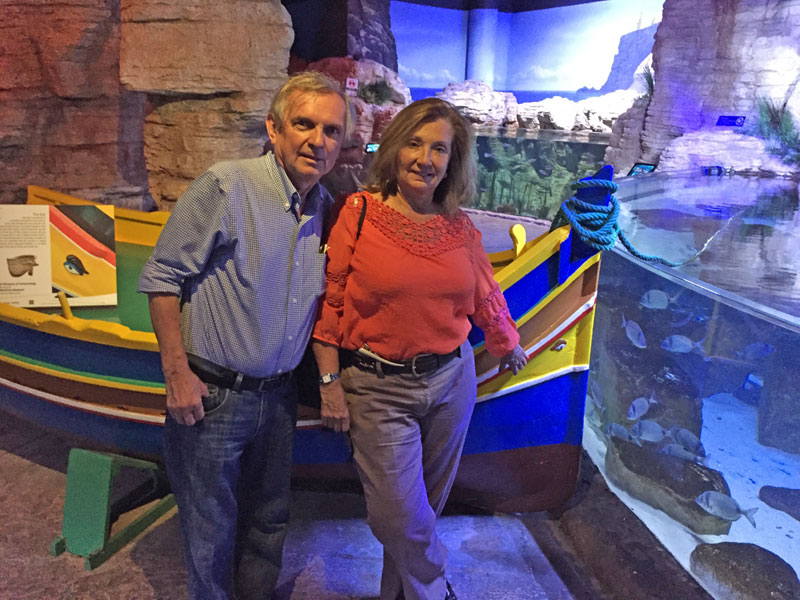
Maltese fishing boat, the "luzzu" has an eye painted on either side. This dates from Phoenician times ... to protect the fisherman. This boat inside the Malta Aquarium. Today, we walked over 8 miles, partly because we got lost on the way home from dinner. Click to see a larger image.

Just landed in Malta, on Air Malta, that sports the Maltese cross on the tails of their planes. Click to see a larger image.
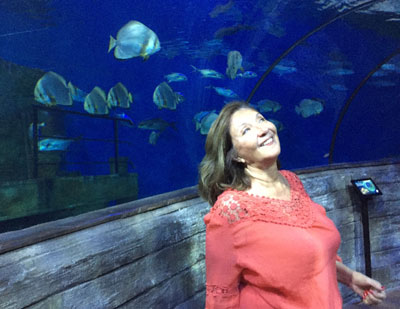
The Malta Aquarium, close to our new apartment. Click to see a larger image.

Bye, bye Sicilia. We started with a chocolate ice cream and lemon sorbet in the center of Palermo (see my Facebook) and we end with lemon sorbet and chocolate ice cream in Catania, after walking over 70 miles, over 110 kilometers in 11 days, and driving some 1,400. Sicily is fabulous. Sicily photos were taken by French, Vietnamese, German, Swedish and even Italian tourists.
Now on to Malta. Click to see a larger image.
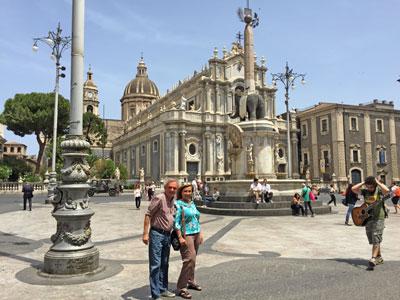
Catania Piazza Duomo. Beautiful. The Lava Elephant is in front of it, now a town symbol of Catania. Click to see a larger image.

Catania. Pliazza Duomo. Click to see a larger image.
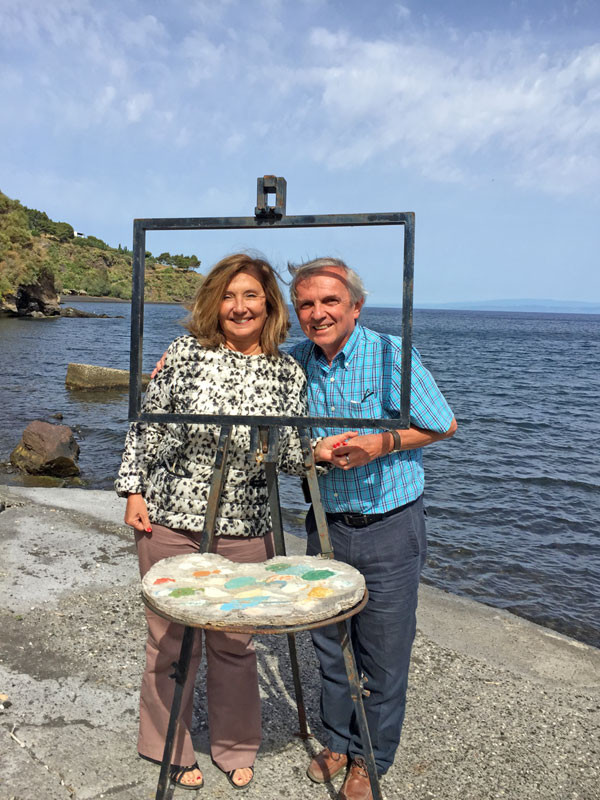
Vulcano Island has three old volcanoes. And views over Sicily. On the way home, between Milazzo and Taormina, about 51 miles, the autostrada had 50 tunnels ... Italians live to drive their roads straight, even if there are mountains in the way. Click to see a larger image.
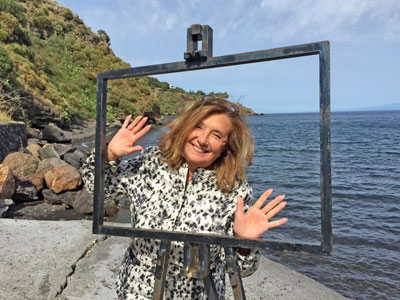
Took us a long time to find a restaurant on the south end of Vulcano Island, which is Vulcano Gelso. Click to see a larger image.
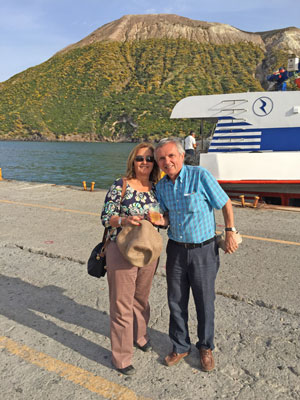
We have volcanoes and volcanoes in Guatemala. This one started it ... "VULCANO".
Click to see a larger image.
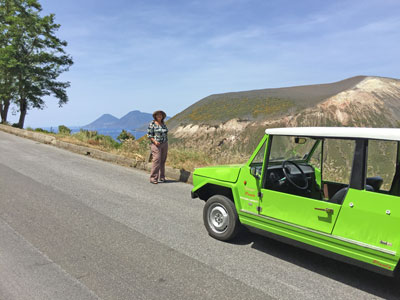
Volcano in Isola Vulcano, on the right, but the others on the left are on Lipari Island. We rented an open car. Click to see a larger image.

A side trip from Sicily by hydrofoil to the Aeolian Islands.
Click to see a larger image.
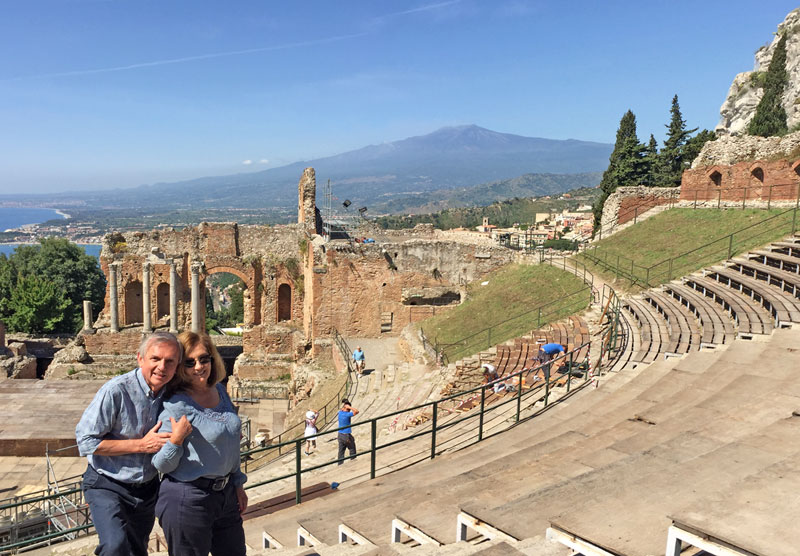
Taormina, one of the world's greatest sites. Built in the 3th century B.C. for Greeks holidaying here from Athens to see serious Greek tragedies (presumably along with Greek hotels, restaurants and souvenir shop as now), it was rebuilt by the Romans in the 2nd century A.D. for gladiator shows and enlarged to 5,000 seats. Today, not a single Greek restaurant remains, a pity. Workmen are preparing the theatre for shows this summer. Click to see a larger image.
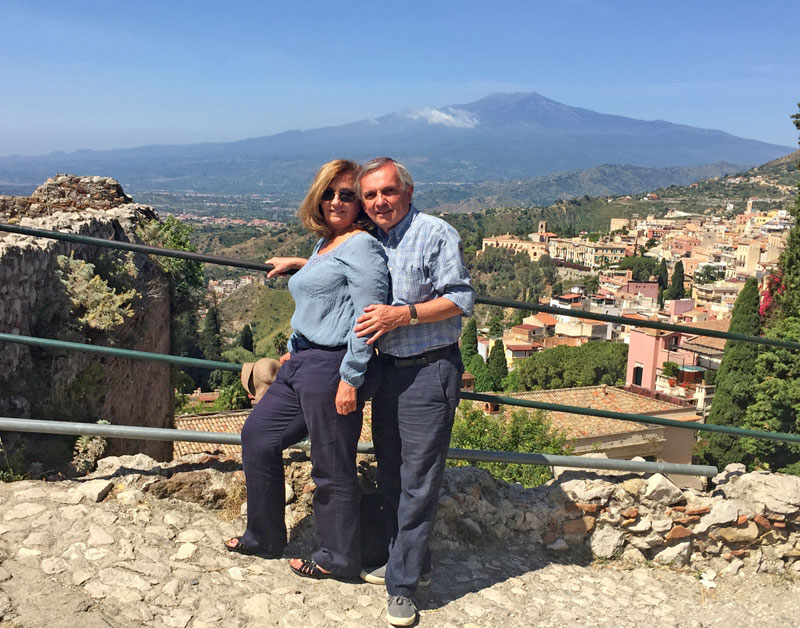
Mount Etna dominates northeastern Sicily. It is not that tall, only 3,350 meters, but it covers a huge area, much of it covers with old (and new) lava flows. Click to see a larger image.
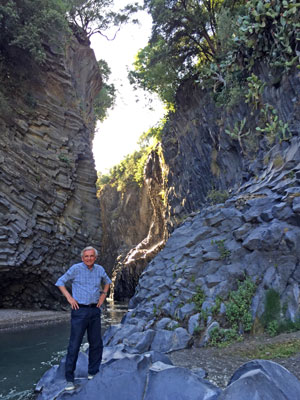
"Gole Alcantara", not far from Taormina.
Click to see a larger image.
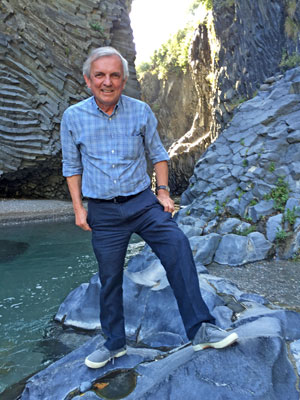
Alcantara River Gorge, on our way day of visiting towns on the slopes on Mount Etna. Click to see a larger image.
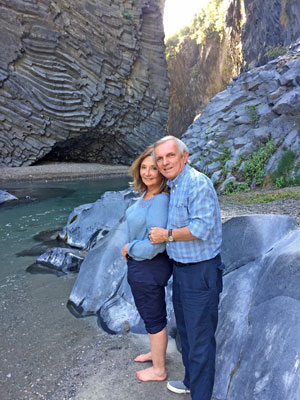
"Gole Alcantara", a narrow gorge in the mountains where the Alcantara River carries ice cold water from snow that is melting on Mount Etna.
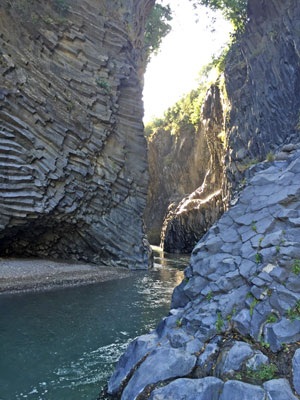
Alcantara River Gorge, on our way home from a day of visiting towns in the slopes on Mount Etna. Click to see a larger image.
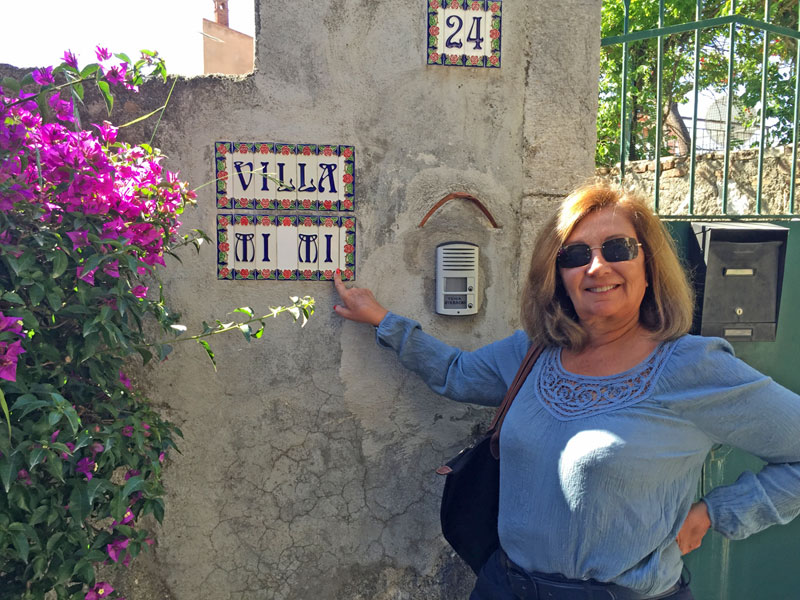
Lorraine just down the steps from our apartment, on the street below. "Mi mi's house"
Click to see a larger image.

The main street in Taormina is quiet at 9:30 a.m. It wakes up later in the morning.
Click to see a larger image.
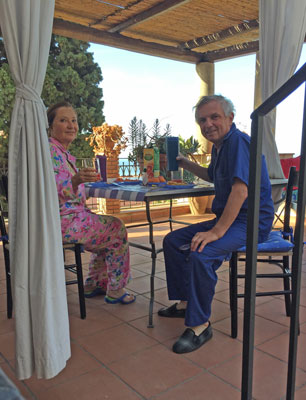
Breakfast on one our terraces ... over the Ionian Sea, which does not show too well, but is bright, below us.

The main street in Taormina is quiet at 9:30 a.m. It wakes up later in the morning. Click to see a larger image.
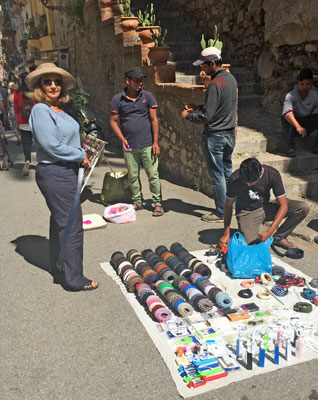
Shopping for belts in Taormina.
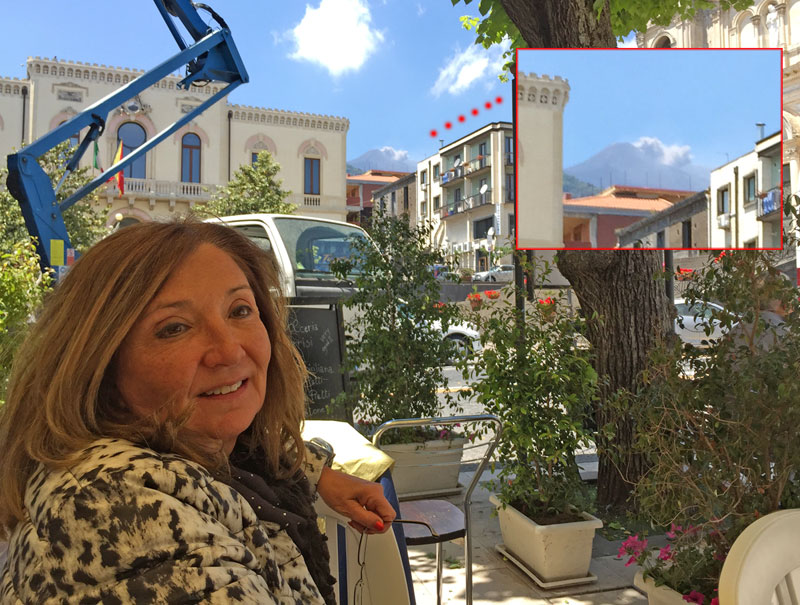
Coming down from Mount Etna, we stopped for lunch in Zefferana, overlooking the sea at one end of the square and the volcano at the other end. As we ordered lunch, Etna, above us, started puffing ... see photo and enlarged inset. No wonder we could not get to the crater. Two days before we arrived here, Etna erupted, click here. Click to see a larger image.

It was getting warmer as we drove lower down from Mount Etna.
Click to see a larger image.

Shopping for belts in Taormina.
Click to see a larger image.

Mountains of lava on Mount Etna. Click to see a larger image.
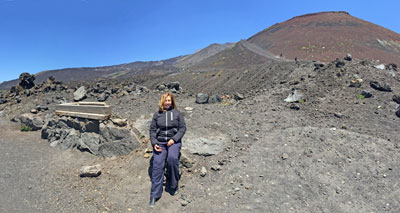
Mount Etna. Many people take the cable car, or as today, the 4x4 vehicles, but some actually walk part way up the huge mountain.
Click on the photo to see a larger image.

Behind us, a snow blower and, behind that, one of the last patches of snow still melting in late May. Click to see a larger image.
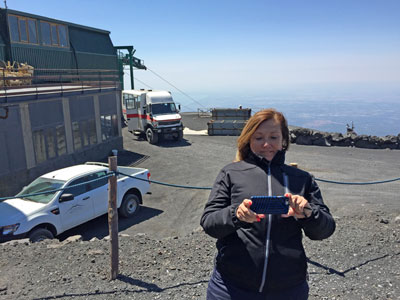
It was cold high on Mount Etna. Below us, Catania and the warm coastline.
Click on the photo to see a larger image.
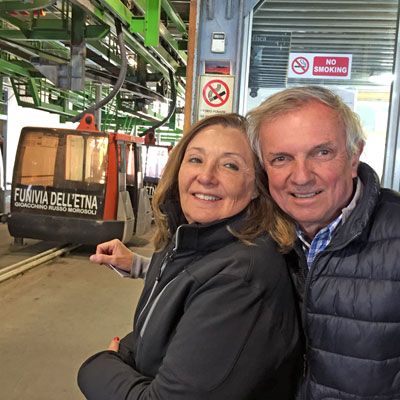
Waiting for the Etna cable car early in the morning ... but it closed because of winds and they ferried us and other in large 4x4 vehicles up the mountain. Spectacular. Click to see a larger image.
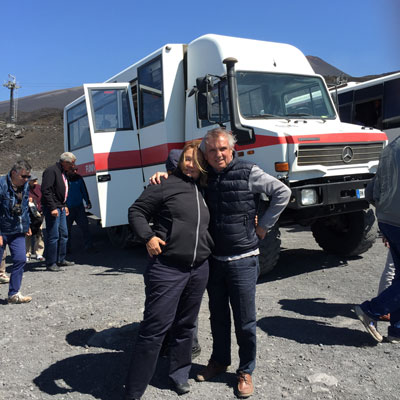
Here we are at 2,500 meters getting off the buses in pretty cold weather. Today, the crater was off limits, because it was blowing off.
Click on the photo to see a larger image.

We went back to the Greek amphitheater, the largest in Italy, but it has been largely converted into a modern functioning theater, with most of it closed off. Click to see a larger image.
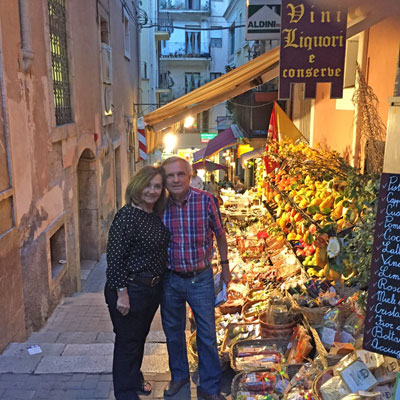
From Siracusa, we moved into a lovely apartment in Taormina, with views of the Greek theatre here, the sea and a good part of Mount Etna. We went sightseeing around Taormina. Click on the photo to see a larger image.

We walked around most of Ortigia today. So far, our walking total is 50 miles in the first week of the trip, some 80 kilometers.
Click on the photo to see a larger image.
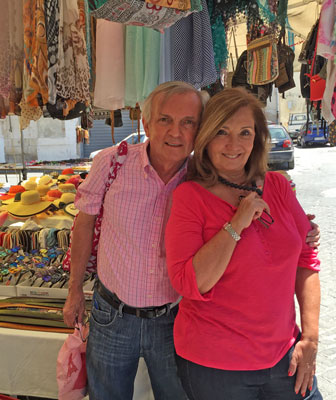
Back on Ortigia, we went to a market and bought a lava necklace.
Click to see a larger image.
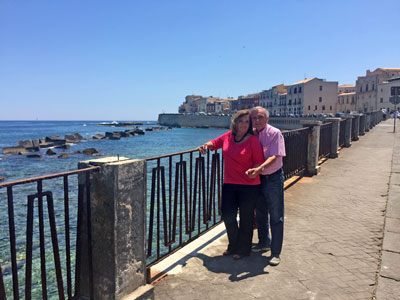
We walked around most of Ortigia today. In the 16th century, they carted a lot of Greek stones out of the amphitheater to build walls all around Ortigia. Click on the photo to see a larger image.
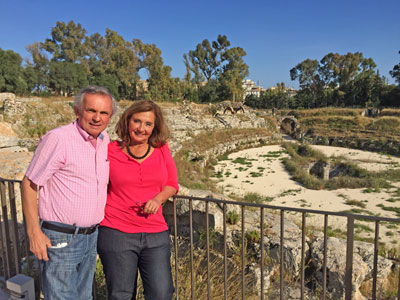
The Roman amphitheater in Syracuse. Not very interesting, and in a poor condition. However, the jewel of Syracuse, the superb Greek Amphitheater was closed all day for a classical Greek play tonight, so we'll have to see it tomorrow. Click to see a larger image.
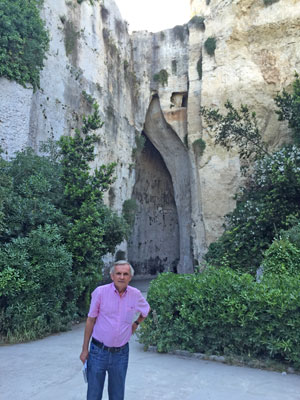
The quarries from which the Greeks extracted hundreds of thousands of cubic meters of stone to build the amphitheater are nearby. This one called the "Ear of Dionysus" has an echo inside it. Click on the photo to see a larger image.
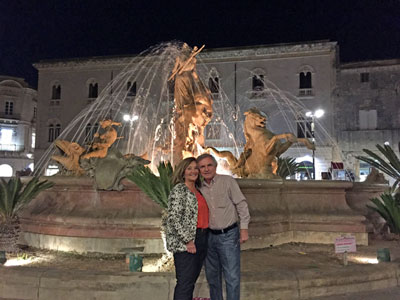
Our apartment in Syracuse is a by the bridge to Ortigia. The ancient island is largely pedestrian now, full of bars and restaurants. We were leaving around midnight, as thousands of people were still arriving.
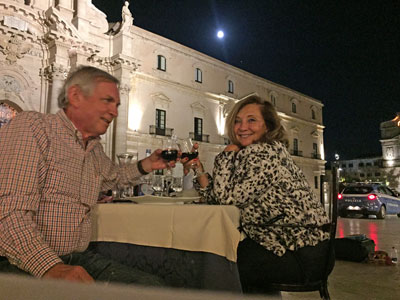
We are collecting FULL MOONS. Here we are in the Plaza del Duomo in Ortigia, in front of the cathedral. We saw full moons in Havana, Rome, Tikal, among other places. Click on the photo to see a larger image.

Villa del Casale, from the 3rd-4th century A.D. has different mosaics in each room. Here, athletes compete in different sports. Top left, she uses weights to help proper her in the long jump, next a discus thrower and so on. The two women at bottom left are winners, one already crowned, the other being given her award. Click to see a larger image.

Villa del Casale in the hills of central Sicily, near the old town of Piazza Armerina, contains the largest and best preserved collection of Roman mosaics anywhere in the world. Click to see a larger image.

Villa Casale flooded and was covered in mud about the 12th century, which saved it from looters, until it was found again late in the 19th century.
Click on the photo to see a larger image.
For more on Ville del Casale, click here.

One of the Greek temples in Agrigento's Valley of the Temples.
Click to see a larger image.

All the temples at Agrigento were built between 6th and 5th century B.C., when the town had 200,000 inhabitants. This one was converted into a Christian church of St. Peter & Paul in the 6th century A.D, when it was already 1,000 years old. Click on the photo to see a larger image.
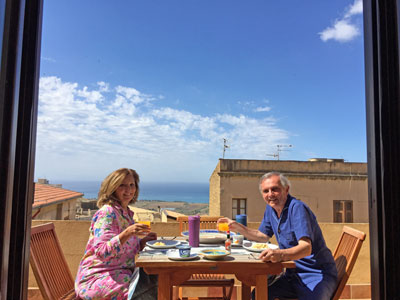
A lot of our visit to Agrigento revolves around food. Last night a superb dinner in a restaurant that is part of San Pietro church. This is a totally airbnb.com vacation, with the best apartment of them all here in Agrigento. This morning, breakfast on our terrace ...

... and a fabulous lunch on the beach in Lido de Agrigento.
Click on the photo to see a larger image.
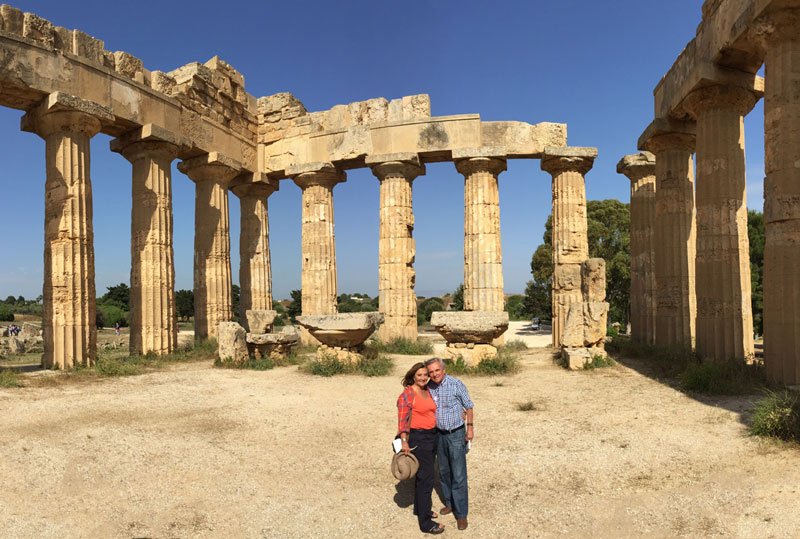
Selinunte fought with Segesta, see below. The problem was, they lined up against Carthage, a bad choice at the time.
A prosperous Selinunte was once attacked and next time, flattened. It never recovered. Click to see a larger image.

Selinunte was totally destroyed and the two temples standing are the result of recent reconstructions. The rubble behind is result of the 407 B. C. demolition by Carthagenians.

Selinunte, spectacular, looking over the Mediterranean.
You can see the damage caused in 407 B.C. It never recovered and faded into history. Click on the photo to see a larger image.
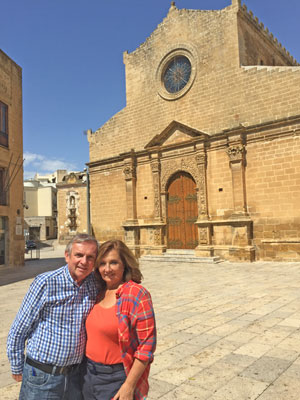
On the way from Segesta to Selinunte we stopped for lunch in Castelvetrano, with churches from the 16th century in the main square. See a larger image.

Segesta, extremely well preserved.
Click on the photo to see a larger image.

Segesta, a Greek temple (and town above), 5th Century B.C.
Click to see a larger image.

A spectacular, isolated site. The Segesta temple was never finished, they fought with Selinunte to the south for a couple of hundred years, about 5th - 3rd century B.C. Can you imagine, they counted 409 B.C, and "the New Year" of 408 B.C. and then a battle in 407 B.C. , 406 B.C. and so on ... when Cathaginians aligned with Segesta and flattened Selinunte, which never recovered, see above.

Teatro Massimo in Palermo. We saw an unusual, modern ballet of "Cinderella", not by Prokofiev, but set to music by Handel.
A spectacular theatre, sold out for a performance by an Italian cast. Click to see a larger image.
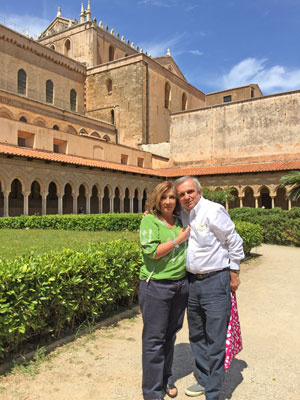
Cloisters at the Monreale monastery. Click to see a larger image.
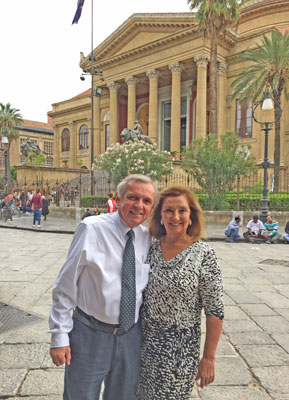
After a trip to Monreale, back in Palermo: Teatro Massimo. The largest theatre in Italy and one of the largest in Europe.

Monreale, the 12th century cathedral with superb Norman-Arab mosaics covering 6,000 square meters, the whole of the interior.
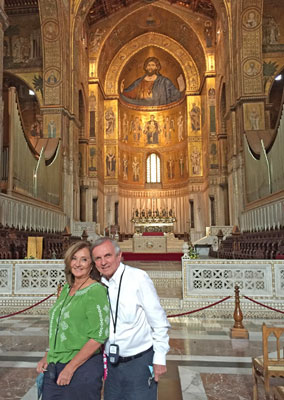
One of the most spectacular mediaeval cathedral, Monreale, is covered in mosaics all over the interior. Click to see a larger image.
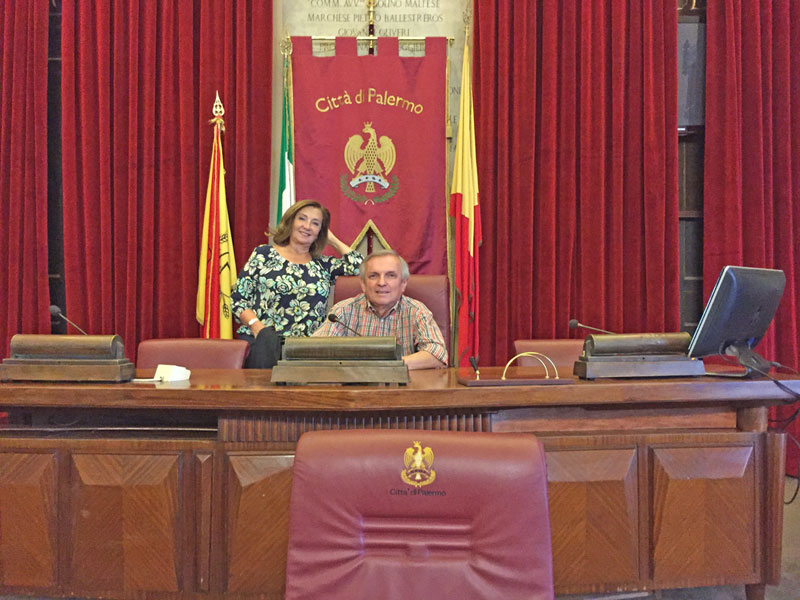
We recently tried out for the White House job, but given that it's not likely to happen any time soon, we are now trying for Mayor of Palermo, a very good job that comes with a nice office. Click to see a larger image. So far, we have walked 6 miles in London, and 13 miles in the first two days in Palermo.

The Mayor's job comes with a nice office in a big palace and lots of secretaries. Click to see a larger image.
.

Mayor of Palermo gets a nice set of meeting rooms, too.
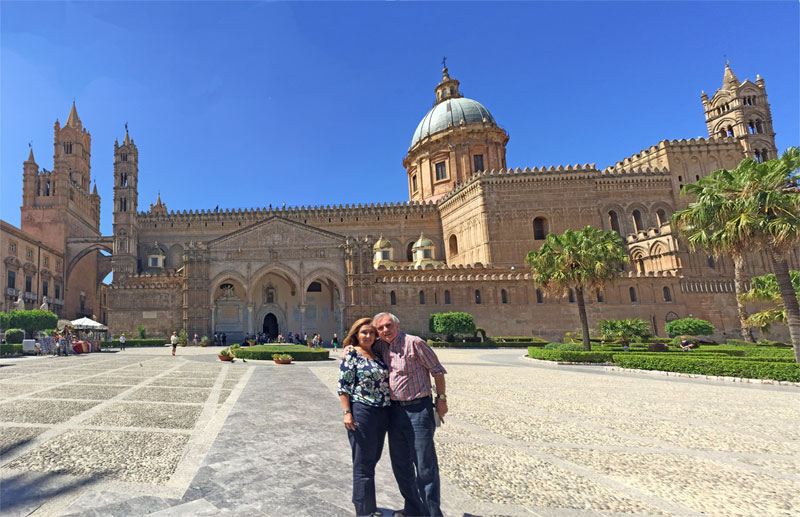
Palermo cathedral was built over many centuries ... each part is different.

Palermo's "El Capo" market. Try and figure out which Mafiosi word that means in English. Later this evening, a few kilometers out of town, on the sea, we had dinner in a nice restaurant called "La Mattanza". The name left over from the Mafia ?

"Quatro Canti", for corner buildings in Palermo, built in 1600, from which the town was divided in quarters. Here's one. Click to see a larger image.
.
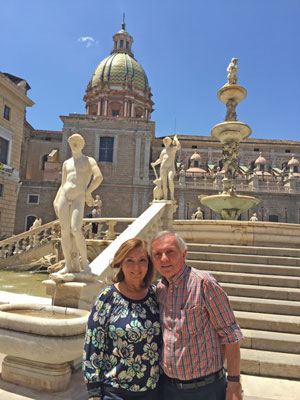
Fontana Pretoria, built 1552-5, in front of the Town Hall, called the "fountain of shame for centuries, because of the naked statues around its.
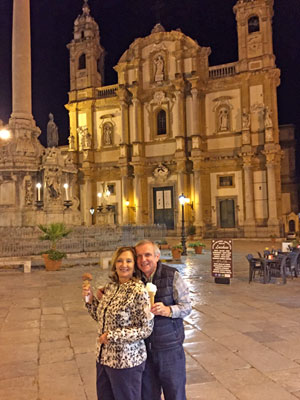
We arrived in Palermo. This is our first evening, close to our apartment in the center of the city. Click to see a larger image.
.
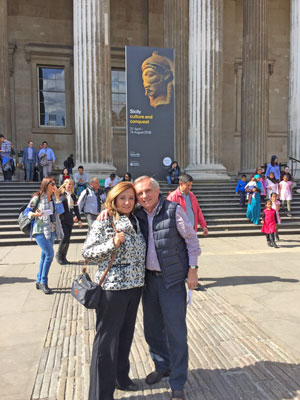
On the way to Sicily, we stopped in London. At the British Museum, they had an interesting exhibition about Sicily, a good introduction to the trip.
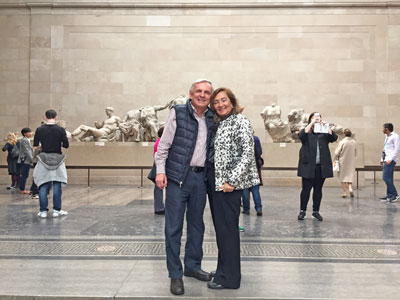
While at the British Museum, we had another quick look at the Elgin Marbles, taken 200 years ago from the Parthenon. Just in case they are soon sent back to Athens. Click to see a larger image.
.

Then we went to an Indian restaurant near Piccadilly Circus, to leave menus for our visit with the Antigua Curry Club in 3 weeks' time.
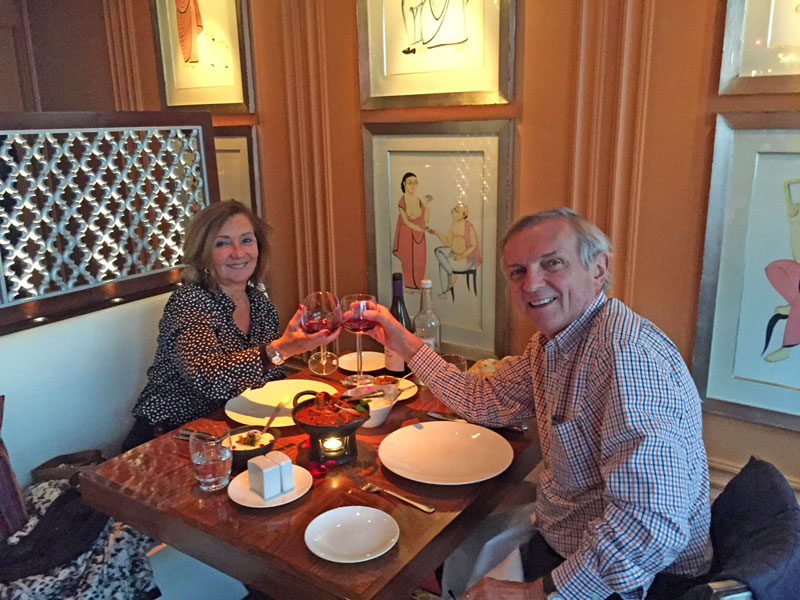
At Veeraswamy, a top-of-the-market Indian restaurant, testing a menu that will be offered to the Antigua Curry Club in June. Very hard work!